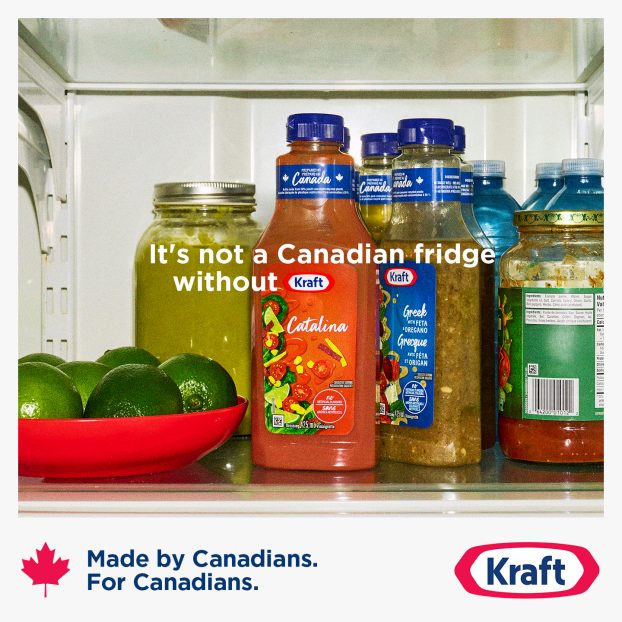Marketers at Kraft General Foods Canada have seen the light and the future lies in creating a healthier peanut butter.
This week, the company is launching Kraft Light Peanut Butter, the first fat-reduced product of its kind.
The peanut butter contains 25% less fat than its weightier precursors.
Marketing efforts will trumpet the fact that the product is reduced in fat, yet maintains its texture and flavor, says Frank Dennis, Kraft’s table spreads product manager.
‘The trick will be getting consumers to sample it,’ Dennis says. ‘Once we get it into their hands on a piece of bread, we’ve won the battle.’
Dennis is optimistic a light peanut butter will bolster a sluggish market that has seen little in the way of new product introductions or technical innovations over the last few years.
With a growing consumer concern over dietary fat, researchers across North America have been frantically engaged in a race to perfect a technology that would reduce the amount of fat in peanut butter while maintaining flavor and texture.
Kraft has emerged as the winner in the Canadian market and plans to keep it that way.
The company is trying to get a patent for its technology.
It is rumored that Peter Pan, a Con Agra brand of peanut butter not available in Canada, will launch a similar light peanut butter product in the u.s. before the year is out.
Kraft will kick off its first tv campaign in more than three years with the introduction of Kraft Light Peanut Butter.
Although Dennis is reluctant to reveal much about the upcoming advertising strategy, the tv spots will likely begin airing sometime in December when the product has secured national distribution.
Creative is being developed by J. Walter Thompson.
Dennis says the launch will be supported by in-store couponing, free-standing inserts included in newspapers and event sampling.
‘Next to the commercials, the cornerstone of this campaign will really be event sampling,’ he says, referring to the on-the-street taste tests.
‘We’re really excited about some of the marketing possibilities here because this product ties in with another in-house product.’
Kraft holds a 37% share of the estimated $118 million peanut butter market, according to A. C. Nielsen statistics.
Its major competitor is Best Foods Canada, which makes Skippy Peanut Butter and Squirrel brands – Skippy accounts for 14% of the market and Squirrel, 12%.
Controlled label and regional brands comprise the remainder of the market.
While tonnage figures have remained steady over the past few years, sales measured in dollar values declined by 4% in 1992 because of aggressive and frequent price wars on the supermarket shelves, Dennis says.
For example, a five-gram tub, which normally sells at between $3.29 and $3.49, has typically been marked down to prices somewhere between $1.99 and $2.59.
The move by consumers to larger sized containers has contributed to price deflation, according to Dennis.
Best Foods has also tried to strengthen its market share, but by taking a different tack.
Last January, the company introduced Roasted Honey Nut Super Chunk Peanut Butter.
While nearly 85% of all households stock peanut butter, the smooth variety is the choice of consumers – smooth peanut butter accounts for about 80% of all sales, according to Best Foods’ Skippy product manager, Shelley Smith.
The Roasted Honey Nut peanut butter, which has gained a 1.5% share since its launch, is an attempt to expand the crunchy segment of the market, according to Smith.
Tests also showed the subtle flavor of honey nut was more palatable to consumers in a chunky format than a smooth one, she says.
And while the rival companies are attempting to create interest in the category and expand their markets, they may face other significant challenges this year.
Drought in the southeastern u.s. – the region which supplies most Canadian companies with peanuts – has caused steep increases in the cost of the nuts which will soon catch up with manufacturers.
‘It’s difficult to believe that the higher cost of peanuts supplied to the manufacturers won’t have some repercussions in the marketplace,’ Smith says.
However, it will not be the first time that peanut butter manufacturers have had to grapple with maintaining their market share while facing large increases in the cost of raw materials.
In 1991, the market declined as prices shot up as a result of a similar drought.
Smith says the current cycle is just part of an overall series of market highs and lows.
‘It really hasn’t fluctuated that much when you look at the 10-year timetable,’ she says. ‘We’re in keeping with that overall
picture.’























